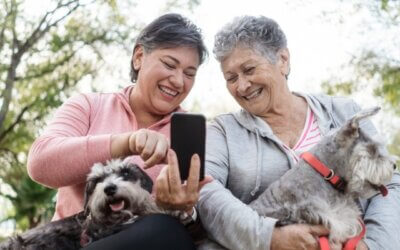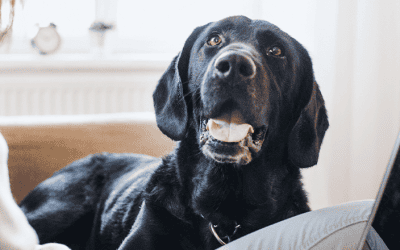One question that frequently comes up on many veterinary discussion boards is, should we participate in a loyalty program for our hospital?
Let´s spend some time breaking down what a loyalty program is, why we should use one, and how we should structure it. Coffee aficionados rejoice! There’s much to be learned from Starbucks.
What is a loyalty program?
A loyalty program is a program where customers are encouraged and rewarded to keep spending at one merchant. They are designed to keep customers coming back.
Here are a few examples of loyalty programs:
Capital One
Capital One Spark Business credit cards give you unlimited 2% cash back on every purchase every day. We LOVE this card. We put all of our business purchases on this card and pay it off every month. When you are talking about purchases for a veterinary hospital, we all know how those dollars add up.
We also love this card because nothing beats cash. If you are not a traveler or you don’t want to have to spend your rewards in one place, this program is amazing.
Starbucks
If you go to Starbucks with any frequency at all, you know about the star program. You get 2 stars for every dollar spent. Starbucks’ Chief Marketing Officer, Matt Ryan states that the program makes up about 40% of the company’s transactions in the U.S. and has grown 26% in the last 2 years.
As of December 2018, there were 16 million active members. They recently revamped their program and there are some things we can learn from the changes made. Ryan states “we know that with loyalty programs, people like to have different options for redeeming.” Under the new program “depending on what you want, in as little as two or three visits, you can have it.”
If you are a Starbucks loyalty member you know all about their double-star days. One day of the month, you earn twice as many stars for any transaction that day. They also have “games” that can be played to earn stars and programs where you can make a combination of purchases to receive bonus stars.
Southwest Air Rapid Rewards
You can earn benefits by being a frequent flyer or by using their credit card to earn points. They have a tier program so that A-List members earn 25% more points on each flight and A-List Preferred members earn 100% more on each flight. Those members also get rewarded with priority check-in, priority boarding, “fly-by” expedited security lanes at select airports, and free same-day standby through airport customer service.
Why should we have a loyalty program?
Loyalty programs are designed to reward your most loyal customers the most. They are also different from discounting in that they are designed to encourage the customer to keep their business at your location and spend their hard-earned rewards at that same location.
Loyalty programs keep customers coming back for more. While loyalty programs are not new, they are relatively new to veterinary medicine. It’s easier than ever to ditch your punch card system and develop a robust loyalty program that is easy to manage, easy to modify, and easy to expand.
Take some time to think about the loyalty programs you are a part of and how that drives your spending. I guarantee that there will be more than you think there are and it is amazing to see how it really does drive spending.
How should we structure our loyalty program?
This is where it gets a little bit more complicated. How do you design a loyalty program appropriate for your business model and drive spending in a way that is most beneficial to your veterinary practice?
While that question cannot be answered for you, the following are 5 tips that should help you answer that for your business.
1. Put yourself in your clients’ shoes
When my practice first started to offer a loyalty program we came up with what we thought was the best offering that anyone could want. Our clients could redeem their points for toenail trims, toys, anal gland expressions, etc.
One thing that we did not address is would our loyalty program appeal to dog and cat owners? Many of our rewards were geared to dog owners and our most dedicated feline owners were feeling left out. Another thing we didn’t consider was how many toenail trims does one dog need in a month? Think about how many rewards a client can redeem in one month. Are you leaving your most loyal customers left out? We did…we had clients with over 10,000 points and nothing they could spend them on.
Remember how we talked about Capital One’s Spark credit card and how nothing beats cash? We did not end up giving our clients cashback, but we did decide that we would let them accrue dollar amounts and they could decide how they would spend those dollars at our hospital. Ever since we made this change our loyalty program has kicked into high gear and our clients are truly engaged in making sure they are enrolled and getting their points.
[bctt tweet=”Something we didn’t anticipate happening was how much it would motivate the staff to promote the loyalty program. They could see how much more it benefited the client and they wanted to make sure the clients knew about it.”]
2. Reverse engineer programs that you use
When designing a loyalty program, I looked at my own spending and the programs I was participating in. Then I looked at why I liked or didn’t like them.
For example, I shop at both Sephora and Ulta. I prefer to shop at Sephora because they carry more of the brands that I like – BUT – I like the rewards program at Ulta better. Ulta offers cash rewards that you can spend to get more product, so I end up shopping there more to get the rewards. I have lots of points at Sephora but the items that I would like to redeem go very fast due to limited supply.
Another example is fuel points at King Soopers. I get all of my prescriptions filled at King Soopers because I get fuel points. I save my points and often get $1 off each gallon of gas. I will do this instead of getting them filled through my health insurance’s online pharmacy.
[bctt tweet=”In a world where online pharmacies are taking over, could you use a loyalty program to help keep that business at your hospital instead of your clients shopping online?”]
3. Invest in loyalty program software
All of the above variations of a loyalty program require some way to manage and administer them. The good news is that we have more software options today than ever before.
Take into consideration what kind of loyalty program you want to offer and research whether or not the software would meet your needs. Vet2Pet is a great custom app and client engagement option.
4. Drive purchases and behavior that you want
Remember that Starbucks has games and specials. For example, visit 5 days in a row and get an extra 150 stars or purchase a combination of certain drinks or food for an extra reward. What can we learn from this and how can we utilize this to drive spending?
If you have a new Veterinarian starting and you want to encourage people to see them, you could offer extra points when they book a visit with that DVM. Or maybe you have identified that you have a slow day during the week – you could offer bonus points for surgeries or appointments that are booked on that day. What about a month that is typically slower than other months? Maybe you decide to give bonus points for surgeries or dentistries that are performed during that month.
The sky is the limit when it comes to ideas for utilizing your loyalty program to drive spending.
5. Modify when needed
More than anything, experiment with your loyalty program. Track what works for you and what doesn’t. Talk to the customers to get their feedback. Talk to your staff, especially your Customer Care Representatives, to see what works and what doesn’t work. Track metrics to see if your campaigns are successful.
Notice what loyalty programs you participate in and why you like or dislike them. Most importantly HAVE FUN.
Ria Botzler has 25 years experience in management with 20 years being dedicated to veterinary practice management. She has a passion for customer service, marketing, and sales, and brings creativity and efficiency to everything she does. She speaks both locally and nationally on management related topics. Ria is a Certified Veterinary Practice Manager, an active member of the Veterinary Hospital Management Association, Colorado Veterinary Medical Association and founder of the Southern Colorado Veterinary Management Group.



